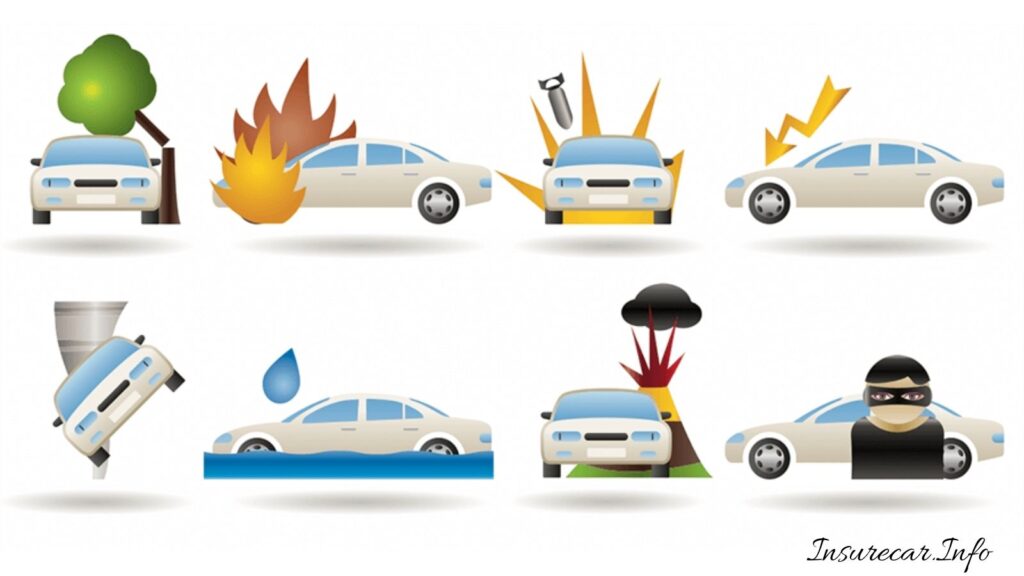The Different Types of Car Insurance You Should Know About
If you’re planning to drive on city roads or interstates, one thing you can’t overlook is having the right car insurance coverage. Whether you own or lease your vehicle, insurance is essential to protect yourself and others in case of an accident. However, with the variety of coverage options available, it can be challenging to determine what exactly you need. In this article, Insurecar.Info will explore the different types of car insurance coverage and help you understand which one is right for you.
Who Needs Car Insurance?

While New Hampshire and Virginia are exceptions, most states require drivers to have car insurance for good reason. Car accidents can lead to substantial financial costs for both property damage and injuries. Without proper insurance coverage, you may find yourself responsible for medical bills and repair expenses if you cause an accident. On the other hand, having the right insurance ensures you’ll only need to pay your deductible if an accident occurs.
Liability Coverage: Protecting Others
Liability coverage is a fundamental requirement in almost all states. It covers injury and property damage caused to others when you are at fault in an accident. There are two types of liability coverage:
- Bodily injury: This coverage pays for the medical costs of others injured in an accident for which you are responsible. Your passengers will be covered, but you will not.
- Property damage: This type of liability coverage takes care of repairs or replacements for other vehicles or property, such as fences and mailboxes, after an accident that you cause. However, it won’t cover repairs for your vehicle or property.
Remember that liability coverage comes with limits, and you will have to pay any costs that exceed these limits.
Uninsured and Underinsured Motorist Coverage: Protection for You
Uninsured motorist coverage steps in when you are involved in an accident with a driver who does not have insurance. On the other hand, underinsured motorist coverage comes into play when the at-fault driver’s insurance limits are insufficient to cover all your expenses. While these coverages are mandatory in some states, adding them for extra protection is a wise choice.
READ MORE:
Comprehensive Coverage: Protection from Unforeseen Events

Comprehensive insurance protects you from events beyond your control, such as weather damage, theft, hitting an animal, and vandalism. However, you will need to pay a deductible before the insurance covers the costs. Consider the following factors when deciding if comprehensive coverage is right for you:
- Your vehicle’s age and value
- Your vehicle’s mileage
- The likelihood of theft or vandalism in your area
- The likelihood of damage due to natural disasters or extreme weather
Your ability to pay for repairs or replacement out of pocket will also influence your decision.
Collision Coverage: Protection for Your Vehicle
Collision insurance comes into play when your vehicle collides with another vehicle or a static object like a tree or curb. Insurance companies will pay up to your car’s value at the time of the accident, minus your deductible. For newer or high-value cars, collision coverage can be a financial lifesaver. However, for older cars or those with a value close to the deductible, it might not be worth it.
Personal Injury Protection: Covering Medical Expenses
Personal injury protection (PIP) covers medical bills resulting from a traffic accident for you and your passengers. It may also cover other expenses related to your injuries, such as child care or lost income. Some states require PIP as part of their mandatory minimum auto insurance requirements.
Medical Payments Insurance: Medical Costs Regardless of Fault
Medical payments insurance, or MedPay, covers medical costs for you and your passengers after an accident, regardless of fault. However, unlike PIP, it does not cover home care services or lost wages.
Guaranteed Auto Protection: Covering the Gap

Also known as gap insurance, guaranteed auto protection covers the amount you owe on a lease or loan if it exceeds your vehicle’s actual cash value when totaled in an accident. This coverage is usually required for leased vehicles.
Rental Reimbursement: Covering Rental Vehicle Costs
Rental reimbursement pays for the cost of a rental vehicle while your insured vehicle is being repaired or replaced.
Emergency Roadside Assistance: A Lifesaver for Breakdowns
Emergency roadside assistance helps with various issues, such as unlocking your car, jump-starting a dead battery, fixing a flat tire, or refueling your vehicle if you run out of gas. It can be especially useful for inexperienced drivers.
Classic Car Insurance: Protecting Vintage Vehicles
Classic car insurance provides coverage specifically for vintage, classic, or antique vehicles. Each insurer has its own definition of what qualifies as a classic car.
Conclusion
In conclusion, understanding the different types of car insurance coverage is crucial for tailoring a policy that suits your driving habits and lifestyle. By selecting the right coverage, you can protect yourself and others on the road and ensure that you’re financially prepared for any unforeseen events.
Source: https://www.caranddriver.com/car-insurance/a36367346/types-of-car-insurance/
